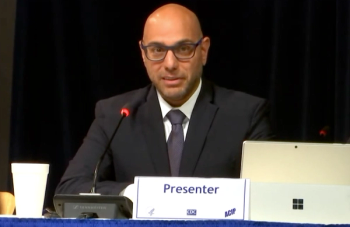
More physicians are leaving traditional Medicare, with primary care hit hardest
Key Takeaways
- The annual physician exit rate from Medicare doubled from 1.8% in 2010 to 3.6% in 2023, with primary care physicians most affected.
- Solo practitioners experienced the fastest increase in exits, attributed to operational burdens and shifts in the workforce landscape.
New JAMA Health Forum study shows the rate of physicians exiting Medicare has doubled since 2010, with solo practices and primary care physicians leading the way.
A growing number of U.S. physicians are cutting ties with traditional Medicare, according to a new study published July 18, in
The research, which analyzed fee-for-service Medicare claims from 2010 to 2024, determined that the annual physician exit rate from Medicare doubled over that period, climbing from 1.8% in 2010 to 3.6% in 2023.
“Physician exit from traditional
The study defined Medicare exit as the absence of any fee-for-service claims for 12 consecutive months and did not distinguish between physicians retiring, switching payers or leaving clinical practice altogether. The study also did not account for new physician entries.
Primary care, small practices most affected
Primary care physicians (PCPs) had the highest exit rate of any specialty group in 2023 at 4.41%, compared to 3.5% for hospital-based specialists, 2.99% for surgical specialists and 2.49% for medical specialists. Notably, PCP exit rates grew faster than all other specialty categories, even after adjusting for age.
Solo practices experienced the fastest increase in exits. Although physicians in solo practice had the lowest overall exit rate in 2023 (3.16%), the annual rate of increase outpaced that of physicians in small, medium or large groups.
Researchers linked the trend to mounting operational burdens in smaller settings, in addition to shifts in the broader workforce landscape.
“More rapid growth in exit among small practices likely contributes to consolidated physician markets, given that new physicians increasingly work for large practices,” the authors wrote.
Pandemic spike and post-2020 plateau
Researchers noted five distinct trends over time:
- A gradual increase in exits from 2010 to 2013
- A plateau from 2014 to 2016
- A renewed uptick from 2017 to 2019
- A sharp spike during the COVID-19 pandemic years of 2020 and 2021
- A sustained post-pandemic elevation through 2023
Exit rates in 2023 remained above pre-pandemic levels, suggesting ongoing stressors beyond the acute crisis.
The study cites the growing burdens of patient portal messages, rising demands for documentation and shrinking inflation-adjusted fees as possible drivers. Still, they noted that declining payment alone couldn’t explain the 2014-2016 plateau.
“Variation in exit rates by specialty suggests that concern about inadequate PCP supply may be warranted but requires investigation,” the authors ultimately concluded.
Newsletter
Stay informed and empowered with Medical Economics enewsletter, delivering expert insights, financial strategies, practice management tips and technology trends — tailored for today’s physicians.















